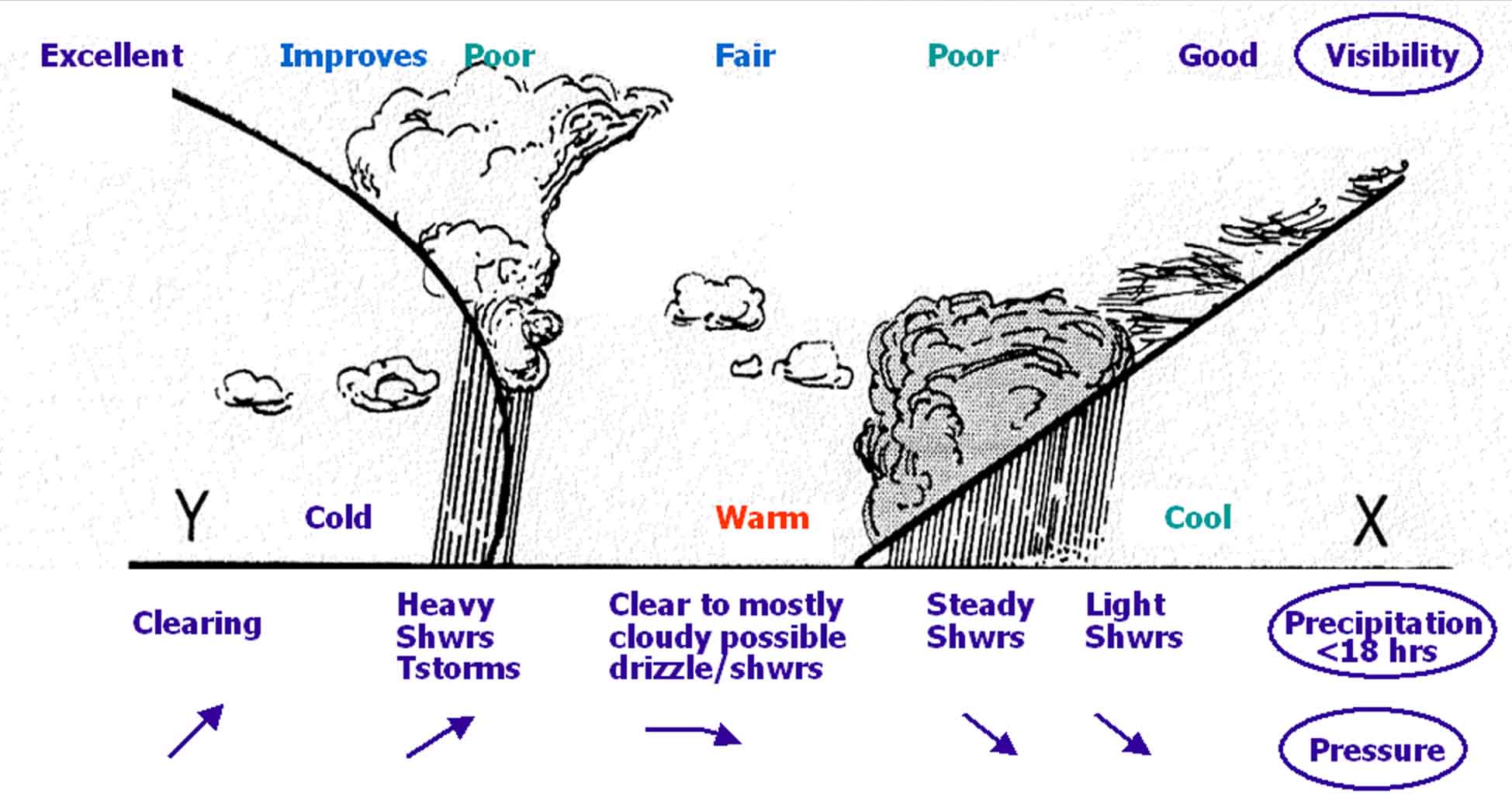OCCLUSION: WARM CONVEYOR BELT TYPE - CLOUD STRUCTURE IN SATELLITE IMAGES
by ZAMG
As already mentioned in the general remarks, the cloud band of the Occlusion described in this chapter is the result of a classical Wave development (see
Wave) represented by a growing multilayered cloud spiral.
For a fully developed stage the following points can be summarized:
- The IR, WV and VIS images show a cyclonically curved synoptic scale cloud spiral, which is because of its genesis connected with the cloud band of the Cold and the Warm Front.
- In the VIS image the cloud spiral is white indicating cloudiness with high albedo.
- In the IR image the grey shades can vary between grey and white with the brightest tops in the transition area between the cloud band of the Cold Front and the Occlusion, where the point of Occlusion can be found. Often grey shades are becoming continously darker downstream towards the centre of the spiral. This is due to the already descending conveyor belts within the mid- and upper levels of the troposphere (see Meteorological physical background). In most cases the cloud tops of the cloud spiral are characterized by a structured appearance.
- The WV image is characterized by high pixel values (white) within the frontal cloudiness. The rear cloud edge of the cloud spiral is characterized by a sharp gradient from white to black, caused by dry descending air within the relative stream of the dry intrusion (see Meteorological physical background).
- Convective cells and even Cb Cloudiness might be embedded within the area of the rear cloud edge of the cloud spiral. This is a preferred area for Cb development, because of a potential unstable stratification of the troposphere caused by the different relative streams (see Meteorological physical background and Weather events).

19 February 1998/00.00 UTC - Meteosat IR image
| 19 February 1998/00.00 UTC - Meteosat WV image
|
|
|
|
|
19 February 1998/06.00 UTC - Meteosat IR image
| 19 February 1998/06.00 UTC - Meteosat WV image
|
At 00.00 UTC a well-developed Wave stage can be observed south of Iceland at approximately 61N/22W with distinct dry air (Black Stripe in the WV image) being involved in the circulation.
At 06.00 UTC an intensification of both the cloud spiral as well as the dry intrusion can be noticed. The cellular structure immediately south of Iceland at approximately 62N/17W indicates a potentially unstable stratification within the troposphere.
19 February 1998/12.00 UTC - Meteosat IR image
| 19 February 1998/12.00 UTC - Meteosat WV image
|
|
|
|
|
19 February 1998/12.00 UTC - Meteosat VIS image
|
|
At 12.00 UTC this process has further developed where a lot of typical features can be observed: a bright cloud spiral in all three channels, a structured appearance in all three channels, decreasing cloud tops to the centre of the spiral south to south-east of Iceland from approximately 62N/18W to approximately 64N/14W, an intensive (dry) black area in the WV image - this area, which is slightly superimposed on the bright area in the VIS image, is restricting the height of the cloud tops.
A stripe of more cellular structured cloudiness extending from Iceland above the Norwegian Sea at approximately 65N/05W is easily detectable in the IR and WV image.

 Cross-section through an occluded front
Cross-section through an occluded front



















